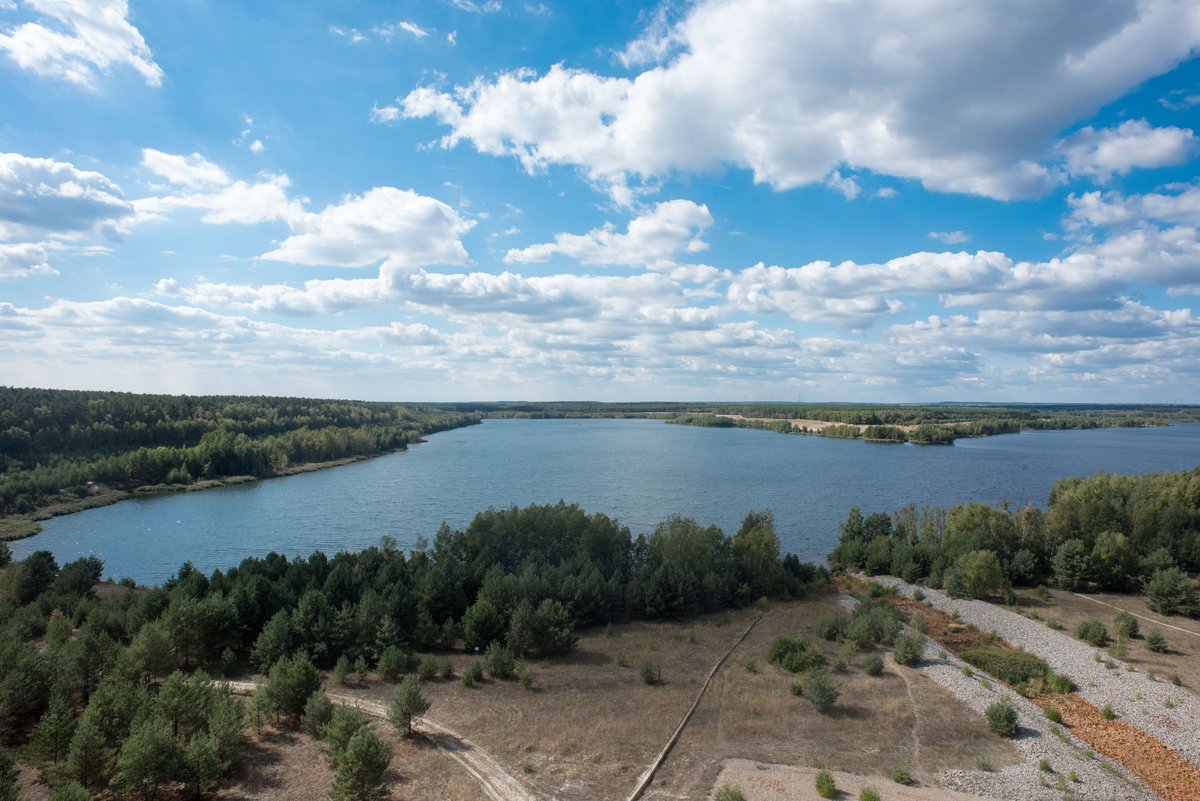Fit for the future: Two lignite regions get ready
Many years of diverse lignite mining have fundamentally reshaped the landscapes of Lusatia and the Rhineland. With the progressive decline of mining and its planned termination within the next decade, both regions will emphatically change their face.
The end of lignite mining means profound change not only for Lusatia. A region in the Rhineland is also facing major changes. What can both regions learn from each other? What are identical or specific challenges? How can they be solved? Answers to these questions are provided by an author team of environmental, geological and economic scientists from the Brandenburg University of Technology Cottbus-Senftenberg (BTU) and the Rheinisch-Westfälische Technische Hochschule Aachen (RWTH) in their recently published article in the renowned journal Environmental Sciences Europe entitled "Perspectives of lignite post-mining landscapes under changing environmental conditions: what can we learn from a comparison between the Rhenish and Lusatian region in Germany?".
BTU scientists Prof. Dr. Thomas Raab and Dr. Werner Gerwin, together with Prof. Dr. Frank Lehmkuhl from RWTH, are the initiators of the study. Together with eleven colleagues* they have highlighted both challenges and opportunities for post-mining landscapes. "The two lignite mining areas differ significantly," says Dr. Werner Gerwin of the BTU's Research Center Landscape Development and Mining Landscapes (FZLB). "In particular, the abiotic and biotic environmental factors, specifically soil properties and climatic conditions, but also the socioeconomic conditions lead to very different perspectives for the development of these two regions during and after the ongoing transformation process."
Germany's two largest lignite mining areas are located in geographically opposite regions: Lusatia in the east and the Rhineland in the western part of Germany. Due to the different conditions, there are significant differences in the functions and services that the respective ecosystems can provide to humans. In the two regions, different mining technologies, as well as reclamation strategies, were developed and deployed according to the natural conditions, which affected the post-mining landscapes and the ecosystem services they were expected to provide. "For example, in the Rhineland, high-quality arable soils can be restored with the fertile loess, while in Lusatia, often only sandy and mostly nutrient-poor soil material is available," Dr. Gerwin said. "This has led to the fact that in the Rhineland, high-yield agriculture can also be practiced in post-mining landscapes, while in Lusatia, alternative land use options are currently being increasingly considered." In addition to the production function, however, biodiversity must also be kept in mind as another landscape function.
Bioeconomy and tourism in Lusatia
In the view of the researchers, the post-mining landscapes of eastern Germany offer potential for a future bioeconomy precisely because of their barren soils. Instead of trying to practice low-yield agriculture on these soils, they could be important production sites for bioenergy plants (especially fast-growing woody plants or grasses) or of plants that can be used as renewable raw materials. Examples would be so far little used shrubs like broom or fiber plants like alfalfa or also useful hemp. Consideration is also being given to combining such crops with adapted photovoltaic technology (Agri-PV).
In the short to medium term, the scientists expect great potential for tourism in the Lusatian mining region. The newly created lakes play a central role in this. A prerequisite for future economic development is the modernization of the Lusatian infrastructure, such as an efficient transport system and fast Internet.
Sustainable agriculture in the Rhineland
In the Rhineland, the study team sees more potential for intensive sustainable agriculture. However, the scientists believe that the main focus should be on protecting biodiversity: integrated retreats for plants and animals and the integration of ecologically important structures such as hedges or natural streams.
The scientists agree that the prerequisites for positive socio-economic development and for sustainable land use concepts that also take ecological aspects into account are different in both regions. Nevertheless, or precisely because of these differences, the transfer of knowledge and experience between the two mining regions is of central importance for the success of this comprehensive transformation process.
Contact
Dr. Werner Gerwin
Brandenburg University of Technology Cottbus-Senftenberg
Research Center Landscape Development and Mining Landscapes (FZLB)
T +49 (0) 355 69 4225
werner.gerwin(at)b-tu.de
Prof. Dr. phil. Thomas Raab
Brandenburg University of Technology Cottbus-Senftenberg
Chair of Geopedology and Landscape Development
Phone. +49 (0) 355 69 4226
raab(at)b-tu.de
Prof. Dr. Frank Lehmkuhl
RWTH Aachen University
Chair of Physical Geography and Geoecology
Institute of Geography
T +49 (0) 241 80 96064
FLehmkuhl(at)geo.rwth-aachen.de
About the article:
Gerwin et al. 2023: Perspectives of lignite post-mining landscapes under changing environmental conditions: what can we learn from a comparison between the Rhenish and Lusatian region in Germany? https://doi.org/10.1186/s12302-023-00738-z

